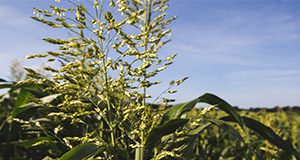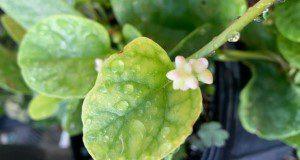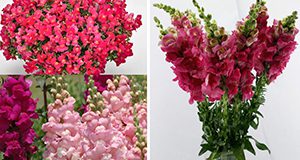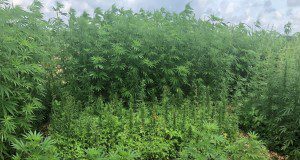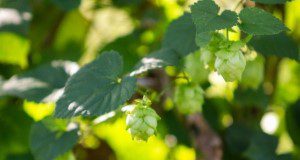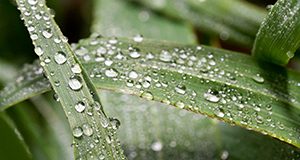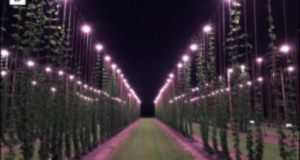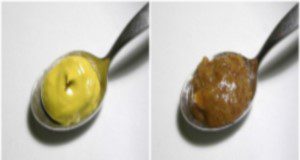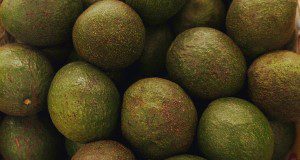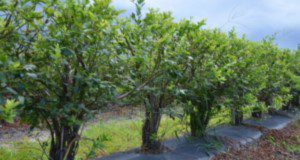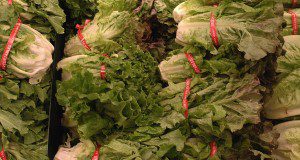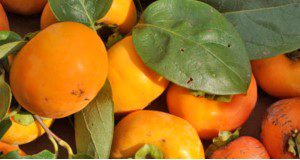Since there are different ways to report moisture (as a decimal or as a percentage), and because the calculation seems intuitive, there is some confusion among agricultural professionals about how to adjust yield to a standardized moisture content. This 4-page publication aims to clarify the concept and the math. Written by Michael J. Mulvaney and Pratap Devkota, and published by the UF/IFAS Agronomy Department, May 2020.
https://edis.ifas.ufl.edu/ag442
Category: Crops
Florida Cultivation Guide for Malabar Spinach
Malabar spinach (Basella spp.) is a nutritious vegetable in the family Basellaceae. Malabar spinach goes by many names, including Indian spinach, Ceylon spinach, vine spinach, and climbing spinach. Malabar spinach has long been established in cultivation in China and India. This spinach is a novel crop to Florida and is currently grown only for niche markets. However, Florida’s suitable climate coupled with Malabar spinach’s great taste and nutritional quality suggest that this crop has great potential for commercial cultivation. This new 8-page publication of the UF/IFAS Horticultural Sciences Department describes in brief how to grow Malabar spinach, manage pests, harvest, and market it. Written by Yuheng Qiu and Guodong Liu.
https://edis.ifas.ufl.edu/hs1371
Bacterial Black Spot (BBS) of Mango in Florida
Bacterial black spot, caused by the bacterium Xanthomonas citri pv. mangiferaeindicae, is a relatively new (~2015) bacterial disease in Florida that has the potential to limit mango production of some cultivars. This new 6-page fact sheet provides the current knowledge and status of the disease potential on various cultivars. Written by Jonathan Crane and Romina Gazis, and published by the UF/IFAS Horticultural Sciences Department.
https://edis.ifas.ufl.edu/hs1369
Mite Pests of Southern Highbush Blueberry in Florida
This 4-page document discusses life cycles, damage, monitoring, and management of southern red mites and false spider mites in southern highbush blueberries. Written by Oscar E. Liburd, Lorena Lopez, and Doug Phillips, and published by the UF/IFAS Entomology and Nematology Department, June 2020.
https://edis.ifas.ufl.edu/in1284
Development of a Model Mutagenesis System for Snapdragon
This 4-page document describes the advantages of snapdragon’s elegant transposon mutagenesis system and its connection to plant breeding. Written by Zhaoyuan Lian, Heqiang Huo, Sandra Wilson, and Jianjun Chen, and published by the UF/IFAS Environmental Horticulture Department, August 2020.
https://edis.ifas.ufl.edu/ep584
Hemp Fertilization: Current Knowledge, Gaps and Efforts in Florida: A 2020 Report
Hemp is an annual herbaceous plant that may be grown for fiber, seed, or flowers. Starting in April 2020, the Florida Department of Agriculture and Consumer Services began accepting applications for cultivation of hemp in Florida, with the potential for building a $20-$30 billion industry in the state. The statewide UF/IFAS Industrial Hemp Pilot Project is researching aspects of agronomic production for hemp cultivation. While a few other state soil testing laboratories provide soil tests and nutrient recommendations based on research and experience, at this time no Florida-specific data on nutrient requirements and fertilization are available. This new 5-page article, written by Rao Mylavarapu, Zachary Brym, Luis Monserrate, and Michael J. Mulvaney and published by the UF/IFAS Department of Soil and Water Sciences, provides a summary of published and personal communications from different states on hemp fertilization.
https://edis.ifas.ufl.edu/ss689
LED light increases leaf area and root length of Humulus lupulus (var. Tettnanger) in vitro
Propagation of hops has traditionally been accomplished through vegetative techniques. A more modern technique, micropropagation, can be used to propagate hops and offers several advantages to vegetative techniques. Research examining the use of LED lights in plant production has observed its ability to promote growth in plants through emission of higher light quality, such as enhanced red and blue wavelength discharge. This new 5-page EDIS publication provides information on the use and application of LED lights to enhance leaf area and root length of hops. Written by Chi D. Nguyen, Dominic Vu, Heqiang Huo, and Brian Pearson, and published by the UF/IFAS Environmental Horticulture Department.
https://edis.ifas.ufl.edu/ep583
Computer Tools for Diagnosing Citrus Leaf Symptoms (Part 1): Diagnosis and Recommendation Integrated System (DRIS)
This new 2-page article provides instructions for using the Diagnosis and Recommendation Integrated System, or DRIS, a web tool designed for analyzing leaf nutrient concentrations of Florida citrus. Written by Arnold Schumann and published by the UF/IFAS Department of Soil and Water Sciences.
https://edis.ifas.ufl.edu/ss683
Bermudagrass Production in Florida
This 10-page document is primarily for Extension agents and farmers looking for detailed information about bermudagrass production in Florida, including cultivar characteristics, fertilization, and pest and disease management. Written by M. O. Wallau, J. M. B. Vendramini, and J. K. Yarborough, and published by the UF/IFAS Agronomy Department, revised May 2020.
https://edis.ifas.ufl.edu/aa200
Small-to-Medium-Scale Sensory Evaluation of Horticultural Crops: Measuring Responses
When measuring the responses of panelists, the main principle behind sensory evaluation, a variety of sensory tests can be used. This new 4-page publication is the second in a series designed to assist producers in the small-to-medium-sized sensory evaluation of their horticultural crops, outlining the types of data and sensory measurement techniques utilized in sensory evaluation. Written by Sean Michael Campbell and Charles A. Sims, and published by the UF/IFAS Environmental Horticulture Department.
https://edis.ifas.ufl.edu/ep582
How to Avoid Common Problems with Leaf Wetness Sensor Installation and Maintenance
Leaf wetness duration is an essential input in disease prediction models and decision support systems in Florida and elsewhere. Incorrect installation or lack of regular maintenance of leaf wetness sensors may lead to errors in plant disease risk monitoring and negative impacts on yield. This 7-page publication provides detailed guidelines for the proper installation and maintenance of leaf wetness sensors and describes the most common problems found in field installations as well as potential solutions. Written by T. B. Onofre, C. W. Fraisse, N. A. Peres, and J. McNair, and published by the UF/IFAS Department of Agricultural and Biological Engineering, February 2020.
https://edis.ifas.ufl.edu/ae538
Using Supplemental Lighting to Control Flowering of Hops in Florida
Hops (Humulus lupulus L.) are an emerging crop in Florida. Florida’s craft beer industry has experienced significant growth over the last 10 years, with 285 breweries producing 42.6 million gallons of beer and generating an economic impact of $3.6 billion in 2018. To respond to their strong demand for locally grown hops, an interdisciplinary hops research team is currently studying optimum crop management practices at the UF/IFAS Gulf Coast Research and Education Center (UF/IFAS GCREC). In Florida, the major yield-limiting factor is premature flowering induced by inadequate day length. This new 4-page article, written by Shinsuke Agehara and published by the UF/IFAS Horticultural Sciences Department, provides guidelines for supplemental lighting to control flowering of hops in Florida.
https://edis.ifas.ufl.edu/hs1365
Small-to-Medium-Scale Sensory Evaluation of Horticultural Crops: Sensory Attributes
Given the economic impact associated with the value and acceptability of horticultural crops, sensory evaluation is commonly employed in research, product development, and quality control, with very specific parameters outlined for its proper execution. The resulting data can be used to make sound decisions about crop quality and marketability, ultimately determining the overall value. This new 3-page publication of the UF/IFAS Environmental Horticulture Department is the first in a series designed to assist producers in the small-to-medium-scale sensory evaluation of their horticultural crops, outlining sensory attributes essential to sensory evaluation, including appearance, aroma, texture, and flavor. Written by Sean Michael Campbell and Charles A. Sims.
https://edis.ifas.ufl.edu/ep579
ET-Based Irrigation Scheduling for Papaya (Carica papaya) in Florida
Three irrigation scheduling methods (set schedule, ET-based, and tensiometer-based) were tested for papaya production in south Florida. ET-based irrigation scheduling was found to conserve water effectively. This 6-page document primarily focuses on the ET-based irrigation scheduling techniques for papaya under Florida conditions. Written by Haimanote K. Bayabil, Jonathan H. Crane, Kati W. Migliaccio, Yuncong Li, and Fredy Ballen, and published by the UF/IFAS Department of Agricultural and Biological Engineering, March 2020.
https://edis.ifas.ufl.edu/ae540
Common Strawberry Diseases in Florida
This new two-page publication of the UF/IFAS Plant Pathology Department describes symptoms of most common strawberry diseases in Florida and summarizes the efficacy of fungicides labeled for management of such diseases. Written by Michelle S. Oliveira and Natalia A. Peres.
https://edis.ifas.ufl.edu/pp354
Recommendations for Control and Mitigation of Laurel Wilt and Ambrosia Beetle Vectors in Commercial Avocado Groves in Florida
The lethal laurel wilt epidemic affecting avocado trees in Florida is caused by a fungal pathogen-ambrosia beetle complex (LW-AB). The death of over 120,000 commercial avocado trees in Florida may be attributed to LW-AB. Recommendations for control and mitigation of this epidemic are needed to guide commercial producers in their decision-making process. This new 8-page publication of the UF/IFAS Horticultural Sciences Department outlines the LW-AB epidemic, provides information on the pathogen and ambrosia beetle vectors, provides a brief outline of current research findings, and offers recommendations for the control and mitigation of LW-AB. Written by Jonathan H. Crane, Daniel Carrillo, Edward A. Evans, Romina Gazis, Bruce Schaffer, Fredy Ballen, and Jeff Wasielewski.
https://edis.ifas.ufl.edu/hs1360
El higo
El higo (Ficus carica L; familia Moracea) se originó en los trópicos del Viejo Mundo: Asia Menor y la Región Mediterránea. En el Mediterráneo, el higo se ha cultivado desde el año 5,000 a.C. Muchos cultivares de higos fueron importados del Viejo Mundo en los últimos 50 años. Actualmente, sin embargo, no hay programas de mejoramiento de higos en los Estados Unidos, y de entre al menos 60-100 cultivares de higos nombrados, relativamente pocos se cultivan en el sureste de los Estados Unidos.
This is the Spanish version of HS27, The Fig. (https://edis.ifas.ufl.edu/mg214). Written by Ali Sarkhosh and Peter C. Andersen, translated by Luis Jonathan Clavijo Herrera, and published by the UF/IFAS Horticultural Sciences Department.
https://edis.ifas.ufl.edu/mg459
Pruning Southern Highbush Blueberry in Florida
Pruning is an essential part of blueberry production and is used to help establish new plantings; promote postharvest growth of new foliage and fruiting wood; balance vegetative and reproductive growth; reduce disease and certain insect pressure; assist in harvesting efficiency; and promote new cane growth and plant longevity. This new 3-page publication of the UF/IFAS Horticultural Sciences Department is a discussion of pruning practices on southern highbush blueberry in Florida. Written by Douglas A. Phillips and Jeffrey G. Williamson.
https://edis.ifas.ufl.edu/hs1359
Lettuce Cultivars Suitable for Use on Organic Soils in Southern Florida
Lettuce as a commercial crop is planted mainly in organic soils (“muck”) in the Everglades Agricultural Area (EAA) in south Florida. This updated 6-page publication of the UF/IFAS Horticultural Sciences Department presents a summary of previous cultivar releases by UF/IFAS as well as a description of cultivars currently planted in the EAA. Written by German Sandoya and Huangjun Lu.
https://edis.ifas.ufl.edu/hs1225
Japanese Persimmon Varieties in Florida
Japanese persimmons were first grown in Florida in the 1870s, but as of 2017, most US plantings are on a small scale; however, even as the overall acreage has decreased, the number of farms in Florida growing the fruit increased from 2012 to 2017. Trees grow and fruit best in central and northern Florida and can produce high yields of good-quality fruit. With an estimated population of more than 21 million, a diverse cultural base, and large cities close to production zones, Florida is primed for a larger persimmon industry. This 11-page revision provides growers with a primer on persimmon characteristics, marketing, and cultivars. Written by Ali Sarkhosh, Peter C. Andersen, and Dustin M. Huff, and published by the UF/IFAS Horticultural Sciences Department.
https://edis.ifas.ufl.edu/mg242
